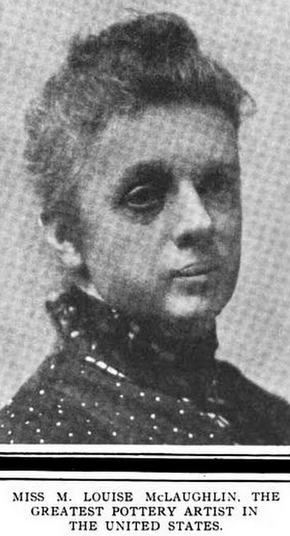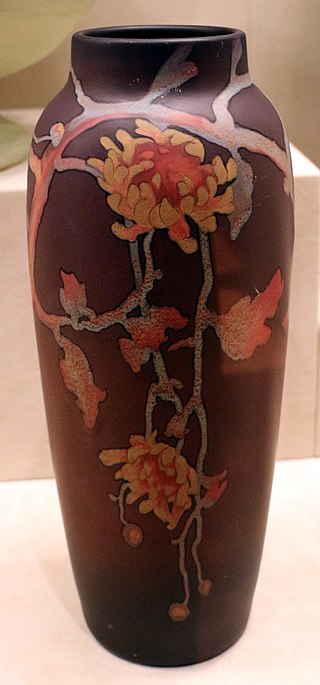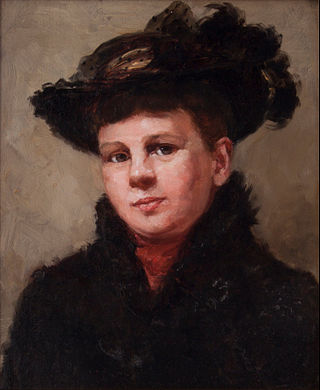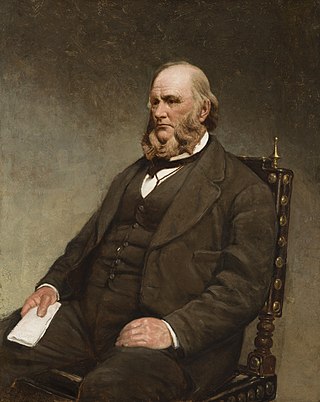
The Charles Hosmer Morse Museum of American Art, a museum noted for its Art Nouveau collection, houses the most comprehensive collection of the works of Louis Comfort Tiffany found anywhere, a major collection of American art pottery, and fine collections of late-19th- and early-20th-century American paintings, graphics and the decorative arts. It is located in Winter Park, Florida.

The Art Academy of Cincinnati is a private college of art and design in Cincinnati, Ohio. It was founded as the McMicken School of Design in 1869, and was a department of the University of Cincinnati, and later in 1887, became the Art Academy of Cincinnati, the museum school of the Cincinnati Art Museum. The college is accredited by the National Association of Schools of Art and Design.

Van Briggle Art Pottery was at the time of its demise the oldest continuously operating art pottery in the United States, having been established in Colorado Springs, Colorado in 1901 by Artus and Anne Van Briggle. Artus had a significant impact on the Art Nouveau movement in the United States, and his pottery is foundational to American Art Pottery. The Art Nouveau style favored by its founders continues to influence the pottery's designs.
The Overbeck sisters were American women potters and artists of the Arts and Crafts Movement who established Overbeck Pottery in their Cambridge City, Indiana, home in 1911 with the goal of producing original, high-quality, hand-wrought ceramics as their primary source of income. The sisters are best known for their fanciful figurines, their skill in matte glazes, and their stylized designs of plants and animals in the Art Nouveau and Art Deco styles. The women owned and handled all aspects of their artistic enterprise until 1955, when the last of the sisters died and the pottery closed. As a result of their efforts, the Overbecks managed to become economically independent and earned a modest living from the sales of their art.

Maria Longworth Nichols Storer was the founder of Rookwood Pottery of Cincinnati, Ohio, United States, a patron of fine art and the granddaughter of the wealthy Cincinnati businessman Nicholas Longworth.

Mary Louise McLaughlin was an American ceramic painter and studio potter from Cincinnati, Ohio, and the main local competitor of Maria Longworth Nichols Storer, who founded Rookwood Pottery. Like Storer, McLaughlin was one of the originators of the art pottery movement that swept the United States.

Kataro Shirayamadani, also known as Kitaro Shirayamadani, was a Japanese decorative ceramics painter who worked for Rookwood Pottery in Cincinnati, Ohio from 1887 until 1948.

Harriet Elizabeth Wilcox was an American artist. She was most known as a decorator of Rookwood Pottery.

Rookwood Pottery is an American ceramics company that was founded in 1880 and closed in 1967, before being revived in 2004. It was initially located in the Over-the-Rhine neighborhood in Cincinnati, Ohio, and has now returned there. In its heyday from about 1890 to the 1929 Crash, it was an important manufacturer, mostly of decorative American art pottery made in several fashionable styles and types of pieces.

Clara Chipman Newton was an American artist best known as a painter of porcelain and china.

Albert Robert Valentien (1862–1925) was an American painter, botanical artist, and ceramic artist. He is best known for his work as the chief ceramics decorator at Rookwood Pottery, and for his watercolor paintings of botanical subjects. In 1908, he accepted a commission from philanthropist Ellen Browning Scripps to illustrate the botanical diversity of California. Over the next ten years, he produced approximately 1200 watercolor "plant portraits" of native California wildflowers, grasses, ferns, and trees.
Clement John Barnhorn (1857–1935) was an American sculptor and educator known for his memorials, architectural sculpture, and ecclesiastic and funerary works.

Laura Anne Fry was an American artist who specialized in wood carving, ceramics, and china painting. She worked at both the Rookwood Pottery Company and the Lonhuda Pottery Company as a ceramic painter and teacher, and she received a patent for one of her technical innovations. She headed up the Purdue University Art Department for a quarter of a century, and under her guidance, the department developed a high reputation for its ceramic program.

American art pottery refers to aesthetically distinctive hand-made ceramics in earthenware and stoneware from the period 1870-1950s. Ranging from tall vases to tiles, the work features original designs, simplified shapes, and experimental glazes and painting techniques. Stylistically, most of this work is affiliated with the modernizing Arts and Crafts (1880-1910), Art Nouveau (1890–1910), or Art Deco (1920s) movements, and also European art pottery.
Anna Marie Valentien, née Buchdrucker was an American sculptor, painter, teacher, illustrator, and decorator.
Wheatley Pottery Company produced ornamental vases, lamps, and ceramic tile in Cincinnati, Ohio. Their autumn leaf tiles were used on the Franklin Building, along Printer's Row in Chicago. The MET has an earthenware umbrella stand from the company in its collection.

The Winold Reiss industrial murals are a set of 16 tile mosaic murals displaying manufacturing in Cincinnati, Ohio. The works were created by Winold Reiss for Cincinnati Union Terminal from 1931 to 1932, and made up 11,908 of the 18,150 square feet of art in the terminal. The murals were first installed in the train concourse of the terminal, which was demolished in 1974. Prior to the demolition, almost all were moved to the Cincinnati/Northern Kentucky International Airport, nine of which were placed in air terminals which were themselves demolished in 2015. The nine works were then relocated to the exterior of the Duke Energy Convention Center, where they stand today. Two murals depicting the Rookwood Pottery Company never left the terminal; they were moved to the Cincinnati Historical Society's special exhibits gallery in 1991.

Joseph Henry Gest was an American artist and art administrator who served as the director of the Cincinnati Art Museum (1902–1929) and president of the Rookwood Pottery Company (1914–1934).

Joseph Longworth was an American lawyer, real-estate magnate, art collector, and philanthropist. A member of the wealthy Longworth family, he helped shape cultural life in Cincinnati for a generation. Longworth sold the parcel of land that would become Eden Park, including the land that would be used for the Cincinnati Art Museum. He also contributed to the construction of the museum and served as its first president. Longworth was the "prime mover" for the Art Academy of Cincinnati, arranging the movement of the school to Eden Park, planning its integration with the museum, and endowing it with $370,000. In 2013 the original Art Academy building was renamed the Longworth Wing of the Cincinnati Art Museum in his honor.

Sara Sax was an American decorative artist and designer, known for her work in ceramics, and scenic landscape paintings on vellum. She was one of the staff at the Rookwood Pottery Company of Cincinnati. Sax was acclaimed for her hand painted floral and peacock feather motifs on ceramics, and her mastery of glazing. She also went by Sarah Sax.
















